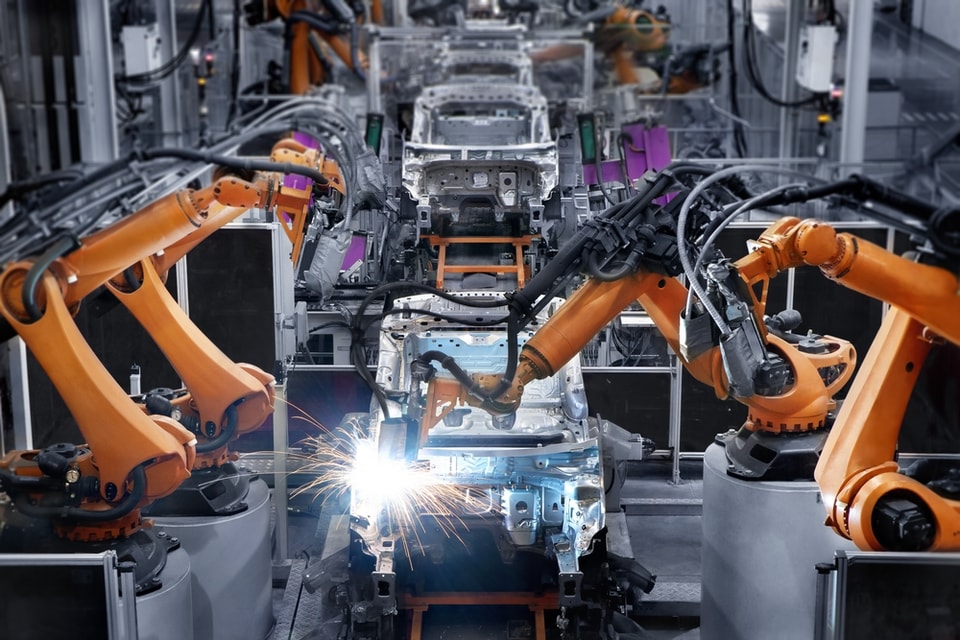Memo Published October 7, 2020 · 5 minute read
What California's 100% ZEV Goal Means for Clean Transportation
Ellen Hughes-Cromwick & Jackie Toth

The week of September 28, California announced a goal of having 100% zero-emission vehicle (ZEV) sales by 2035 in an effort to dramatically reduce emissions from on-road transportation. Given the outsized role California plays in the US auto market, the move could have a big ripple effect across the country, impacting auto companies, auto workers and their unions, and consumers. If this is done right, thoughtful implementation paired with additional federal support could result in new jobs, healthier and more equitable communities, and a significant reduction of climate pollution.
Messaging Guidance
- Electric vehicle sales worldwide grew by 46% in 2019, and this market could be 30 times larger just a decade from now. This is an opportunity that American manufacturers and workers can’t afford to miss out on.
- In order to combat climate change and remain competitive in the global auto market, we need to rapidly transition our fleet to cleaner, American-made vehicles. A ZEV goal like the one California’s governor has proposed is one of many ways we can do that.
- Automakers like to “build where they sell.” Policies that demonstrate a promising market for ZEVs encourage automakers to invest in that region. If the United States wants a share of the manufacturing and workforce opportunities from a surging global ZEV market, it needs to catch up to competitors in Europe and Asia that are already using policies to drive demand.
- Because Governor Newsom’s order simply instructs a state agency to start developing policies to reach the 100% ZEV goal, it’s unclear exactly how this will take shape, and what steps will be taken to maximize benefits for domestic auto manufacturers, workers, and customers. That’s why it’s important to get input from unions and industry when developing these kinds of policies.
- To be clear, nobody is suggesting we ban gas-powered vehicles that are already on the road. ZEV targets and mandates are about making sure new cars will be as clean as possible. Californians would still be able to drive the gas-run cars and trucks they already own, and to buy and sell them in used-car markets. Automakers would still be able to build vehicles that run on gas or diesel in California and sell them in other states.
- Supporting ZEVs does not take away consumer choice. Drivers already have a number of ZEV options, and new models are hitting the market every year. Major automakers aim to introduce electric versions of many of their models by around 2025, with some as cheap as $25,000.
- Even today’s EVs can be cheaper than gas-run cars over the lifetime of the vehicle. Despite a slightly higher sticker price, the average EV buyer will break even after roughly one year, thanks to lower fueling and maintenance costs.
- Promoting more ZEV sales is about improving American competitiveness and providing more, cleaner options for consumers and automakers alike.
- We also need to accompany standards with the right federal policies to make sure our automakers can invest in retooling their facilities to make ZEVs, and that American consumers can afford to purchase a cleaner vehicle and access a charging station wherever they go.
- Washington needs to get involved. Without the federal government stepping in and creating a national roadmap, manufacturers and consumers will be left with a confusing patchwork of regulations and insufficient resources to launch a competitive domestic industry.
Background Information
- Executive orders can only set goals. Gov. Newsom’s executive order doesn’t itself ban the sale of fossil fuel vehicles--that can only be done through legislation. Instead, he’s announced goals for all new cars and passenger trucks sold in the state to be ZEVs by 2035 and for larger vehicle sales to be all-ZEV by 2045, wherever feasible. The order directs the California Air Resources Board (CARB) to develop a roadmap to achieve that goal--increasing the likelihood that this process ultimately results in meaningful transportation electrification policies.
- Not all vehicles are held to the 2035 goal. Some vehicles, such as medium- and heavy-duty trucks, will take longer to meet a ZEV mandate. That’s why the executive order sets a 2045 or “as feasible” timeline for automakers to sell only zero-emissions larger vehicles, as determined by CARB.
- How California ultimately implements this mandate is an open question. It is not yet clear how CARB will set a standard. The Board must work closely with industry and unions to develop the roadmap to achieve its targets. One possibility is that CARB develops tailpipe emissions standards stringent enough that only ZEVs can meet them.
- The state recognizes that this shift will not happen overnight. California will need additional policies to make its target feasible, and the executive order reflects that. The new directive acknowledges that private sector market development, including improving battery applications and management systems, as well as the buildout of charging station infrastructure, will be essential in meeting these targets.
- Some in industry are supportive. Automakers Honda and Ford have both praised California’s order.
- Others in industry are skeptical. The Alliance for Automotive Innovation, which represents all domestic original equipment auto manufacturers except Tesla, said that “neither mandates nor bans build successful markets.” While its members fully support electrifying the road vehicle sector, the alliance emphasized that increasing consumer demand commensurate with California’s goals will take a lot more infrastructure and incentives.
- ZEVs are a climate necessity. According to the United Nations Intergovernmental Panel on Climate Change, we need to achieve net zero emissions by 2050. With light duty vehicles making up the largest share of America’s largest-emitting sector (transportation), major steps need to be taken to reduce the pollution they produce. California’s decision to choose 2035 as their 100% ZEV deadline takes into account the 15 year average fleet turnover for U.S. vehicles.
Achieving these goals likely hinges on the 2020 election. California is in a legal battle with the Trump administration, which has challenged its regulatory authority under the Clean Air Act (CAA) to set stricter tailpipe emission standards than the federal government. A Trump Environmental Protection Agency or National Highway Traffic Safety Administration would likely reject California’s move.

